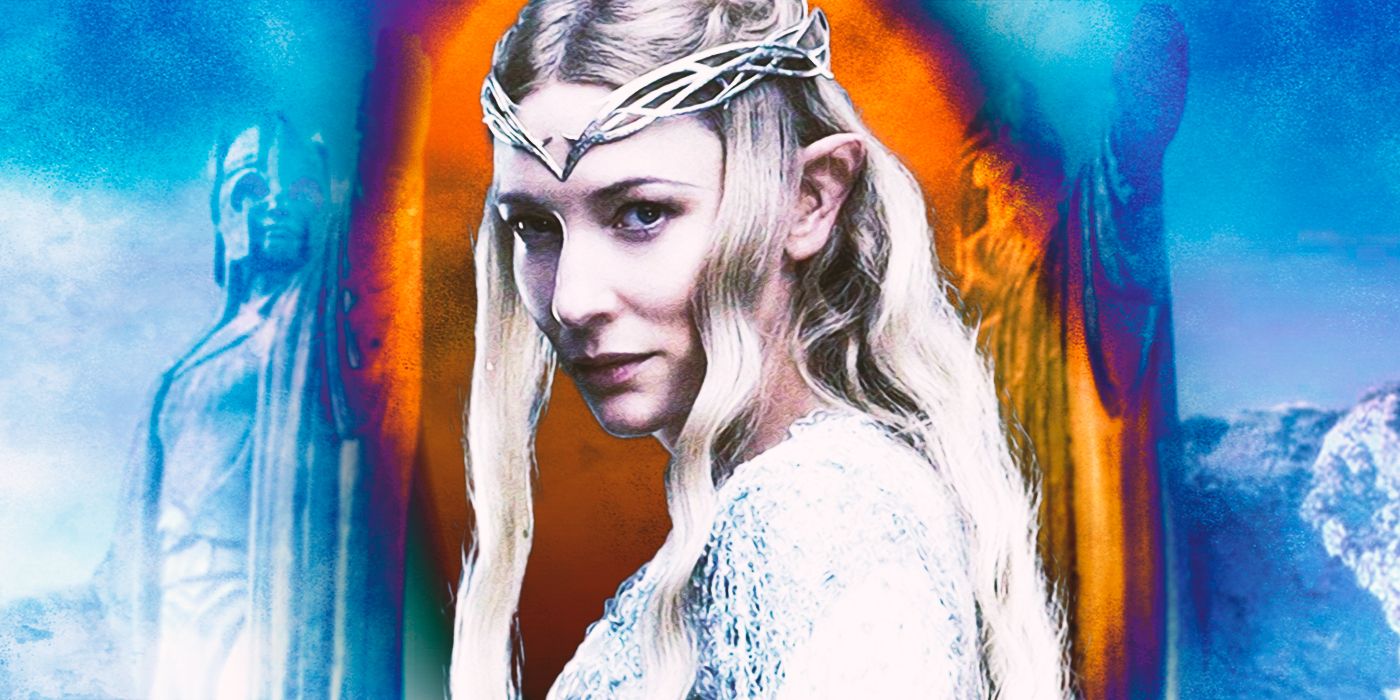
Peter Jackson’s adaptation of The Lord of the Rings remained largely faithful to J.R.R. Tolkien’s seminal fantasy work. However, some characters — like the superpowerful Tom Bombadil and the resurrected Elf Glorfindel — didn’t receive their due. Still, while most fans were pleased with the film trilogy, there was one scene in The Fellowship of the Rings where some didn’t care for Jackson’s interpretation: the interaction between Galadriel and Frodo in Lothlorien.
During their meeting, Galadriel considered accepting the One Ring when Frodo offered it to her. Then, suddenly, she was changed into a terrifying “dark form” that could easily conquer Middle-earth with the Ring’s power. Understandably, the sequence may confuse some fans. Yet, Jackson’s dark depiction of Galadriel — as “beautiful and terrible as the dawn!” — makes sense from a certain perspective, despite the moment straying slightly from the novel.
Updated on June 20, 2024, by Ajay Aravind: Galadriel is arguably one of the most important players in Middle-earth history, having directly influenced countless historical decisions over the course of multiple millennia. Although she was once fiery and tempestuous, Galadriel has accepted her diminishing role in the forthcoming Fourth Age. This particular scene with Frodo was meant to highlight her self-acceptance, but some book fans found her “dark” depiction to be unnecessary. As such, we’ve updated this article with some more relevant information.
The History Of Galadriel Began Long Before The First Age
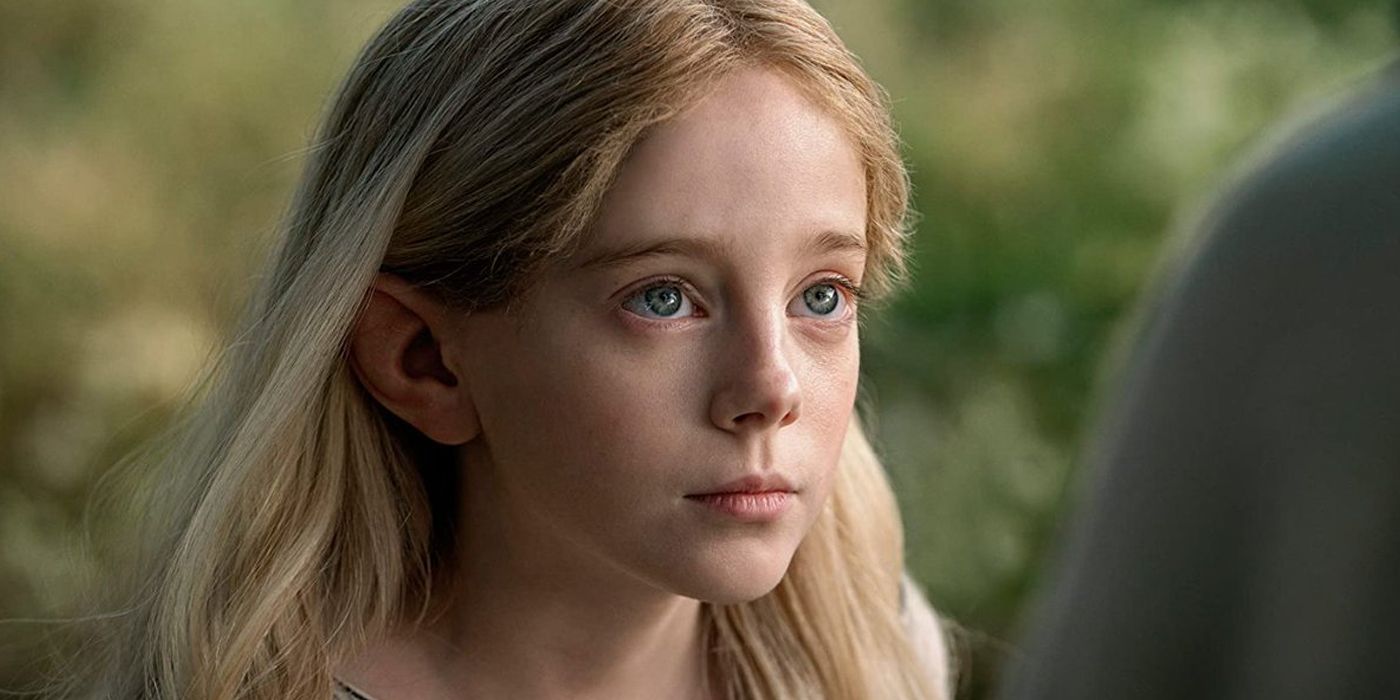
When the Elves first awoke in Middle-earth, they spent many years floundering around under the starlight. Only when the Valar took them to the Undying Lands did they realize just how much they could accomplish. Many great Elves were born in Valinor long before the First Age, and Galadriel was one of them. As the daughter of Finarfin, she was a high-ranking member of the Ñoldorin nobility, but she was also known for her grace, beauty, and, perhaps most importantly, her fiery spirit. On three separate occasions, Galadriel’s close relative Fëanor begged her for a single strand of her radiant hair — which she haughtily refused.
After being tossed around by the tempestuous crucible known as Middle-earth, not to mention living over eight thousand years, Galadriel became much kinder and gentler than she was in the past. As such, she gladly offered three strands of her hair to Gimli, despite the bloody history between the Elves and the Dwarves. In the main LotR storyline, Galadriel remained quite mighty, although she presumably began craving the unpolluted atmosphere of Valinor. By the end, she returned to the Undying Lands whence she came, and would never be seen again in Middle-earth.
Galadriel’s Darkness Was Portrayed Differently In The Book
There is a difference between the movie’s and novel’s accounts of Galadriel, as with many aspects of The Lord of the Rings’ tale. Tolkien’s scene takes place in The Fellowship of the Rings‘ chapter, “The Mirror of Galadriel.” Jackson adapts that scene almost verbatim, but he takes liberty with one word. Tolkien wrote that Galadriel “stood before Frodo seeming now tall beyond measurement, and beautiful beyond enduring, terrible and worshipful.”
In place of the Dark Lord, you would have a Queen, not dark, but beautiful and terrible as the Dawn. Treacherous as the Sea! Stronger than the foundations of the earth…all shall love me and despair!—Peter Jackson’s The Fellowship of the Ring .
Note how Tolkien used the word “seeming.” That may suggest Galadriel’s dark form appeared only in Frodo’s mind. It was as if the Ring had granted him a vision of what could happen if the great Elf were to wield its power. Jackson, on the other hand, used Galadriel’s dark form as a visual cue for the audience. Specifically, it represented how she would become evil if she gave in to her deepest desire. At the same time, Galadriel’s ultimate rejection of the One Ring proved that her spirit was as strong as it was noble, further supporting her decision to go back to Valinor.
Galadriel Chose To Stay In Middle-earth After Morgoth’s Defeat

Choose not the path of fear but that of faith.—The Rings of Power, Episode 4
As shown in J. R. R. Tolkien’s The Silmarillion, Galadriel experienced the splendor of both the Valar and the light of the Two Trees. However, her life there was cut short after Morgoth stole the Silmarils and killed King Finwë, prompting the nightmarish Oath of Fëanor. When the Ñoldor consequently rebelled against the Valar, Galadriel was part of the rebellion and was exiled with the rest of her people, although she didn’t take part in the Kinslaying at Alqualondë. However, she was more than happy to go to Middle-earth.
As part of the Curse of the Ñoldor, she waged war against Morgoth during the First Age. Following the War of Wrath — when the Valar cast down Morgoth — most of Galadriel’s kin returned to Valinor. However, Galadriel chose to stay behind and explore Middle-earth further. So, throughout the Second Age, she was one of the leading Elves. Galadriel would later become the recipient of Nenya, one of the three Elven Rings of Power. With her ring, she built and protected the realm of Lothlórien, which she maintained through the Third Age.
The Rings Of Power Expands Upon Galadriel’s Quest To Defeat Sauron
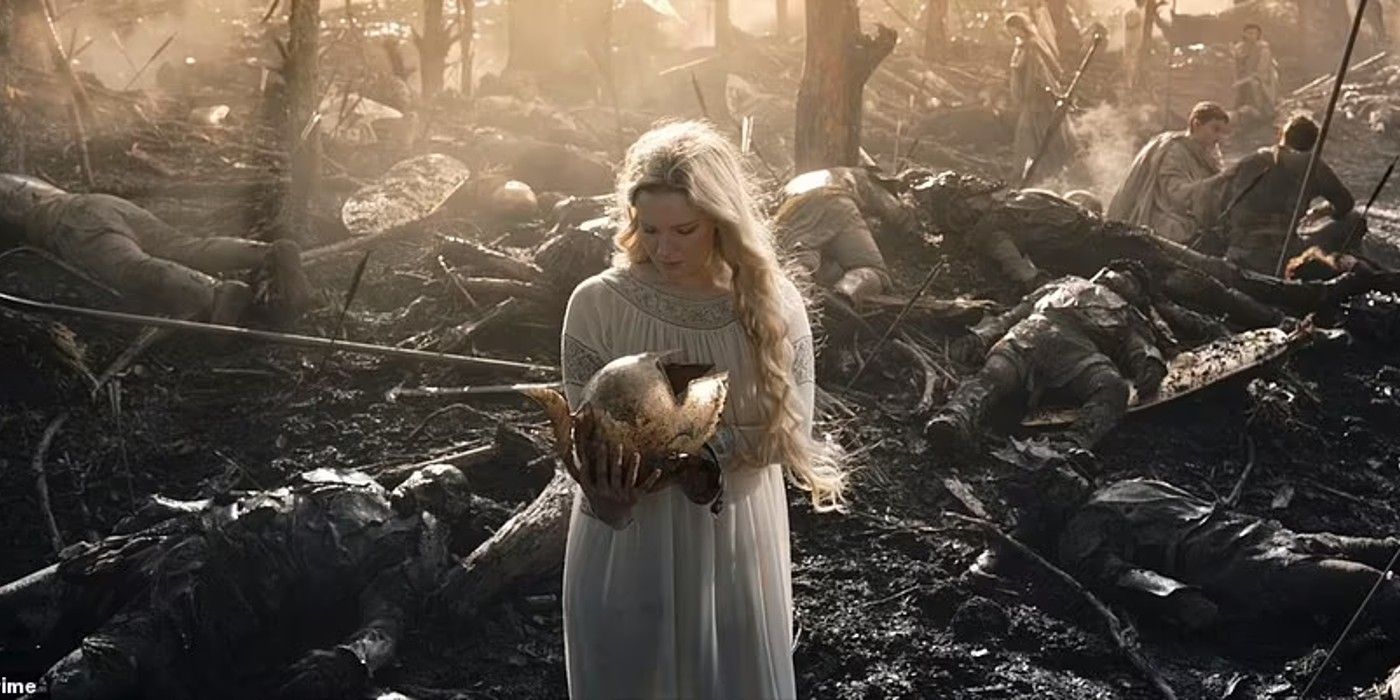
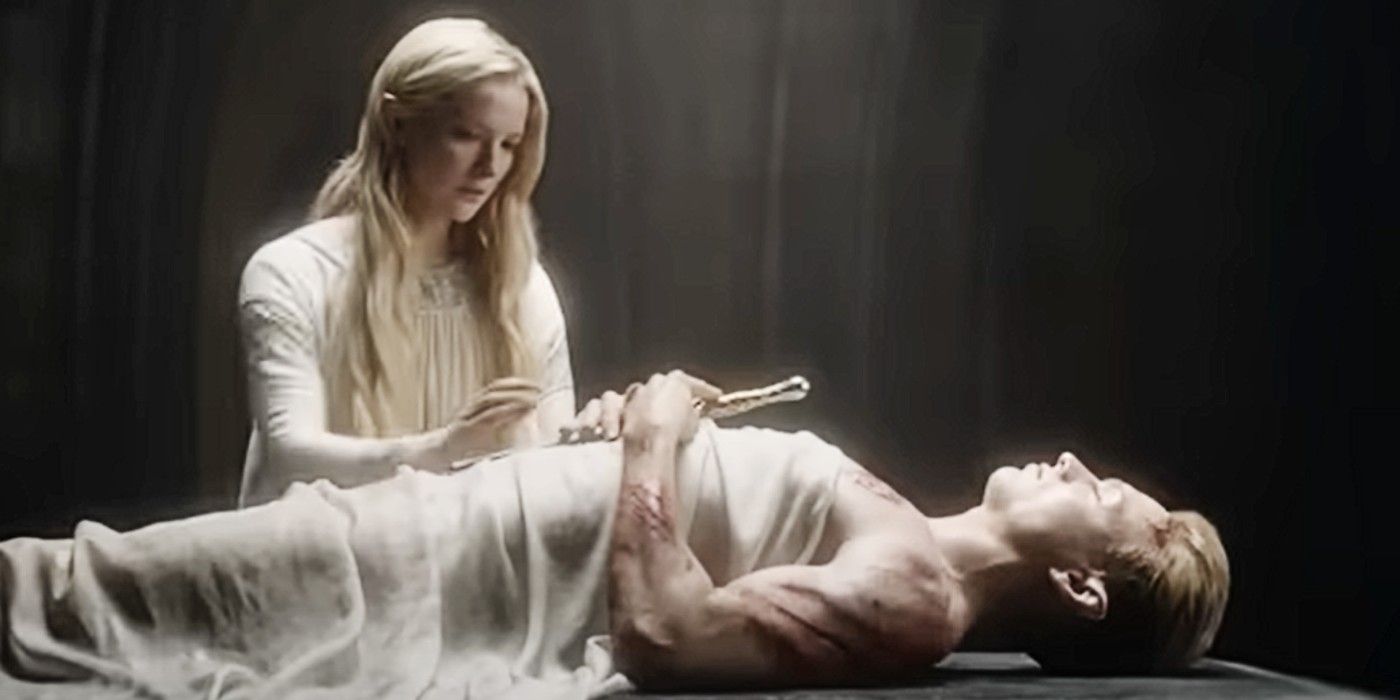
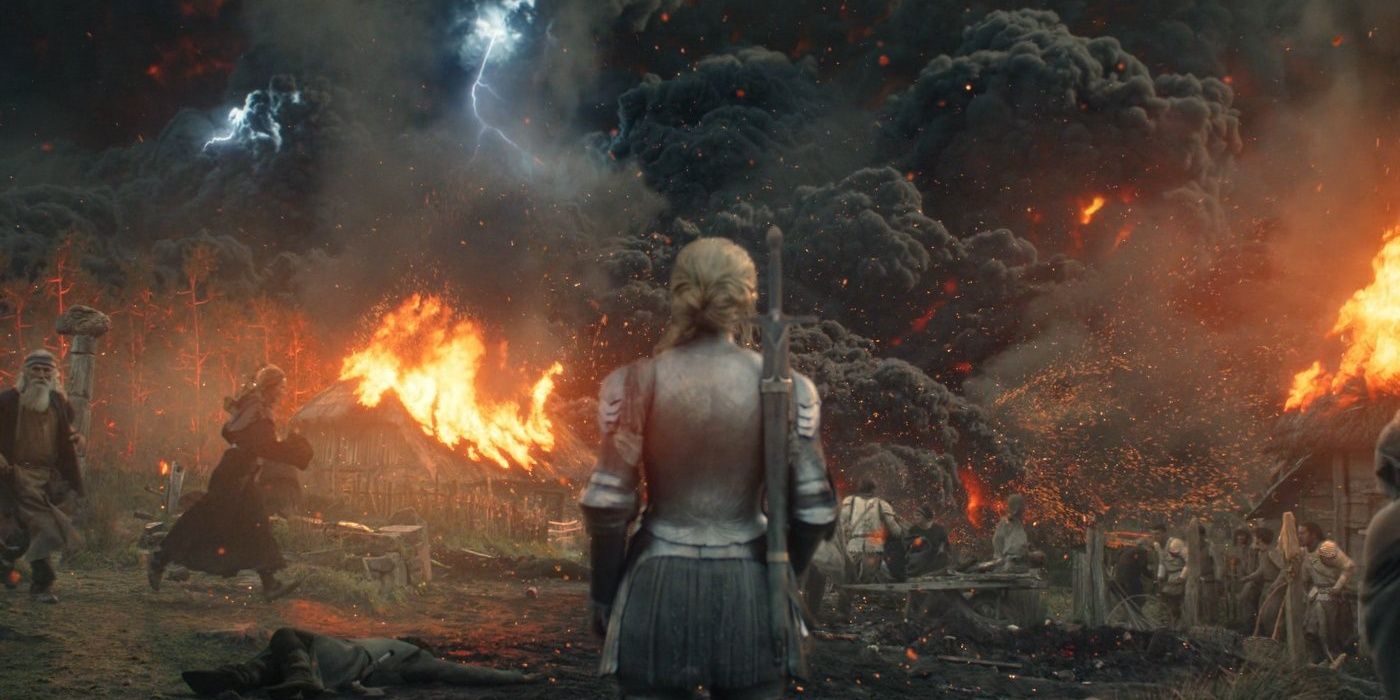
Changes made to Galadriel’s character arc in The Rings of Power:
Galadriel and Elrond weren’t close in the books, but he married her daughter Celebrían
She never actually got to see Finrod’s corpse or mourn him properly
Galadriel didn’t even attempt to return to Valinor until the One Ring was destroyed
She might have met Sauron, but he was definitely not Halbrand at the time
Galadriel never once thought that her husband Celeborn was dead
While Peter Jackson’s Lord of the Rings trilogy portrayed Galadriel as a powerful figure in Middle-earth, The Lord of the Rings: The Rings of Power provided more context for just how long her fight against Sauron had lasted. The series expanded upon the period after Morgoth’s defeat and explained why Galadriel did not accompany many of the Ñoldor back to Valinor. In Season 1, Episode 1, “A Shadow of the Past,” Galadriel takes up the quest to find Sauron after her brother’s death. However, she has been searching long enough at the beginning of the series that many of the elves believe that Sauron is truly gone and no longer a threat to Middle-earth.
In Episode 1, Elrond also revealed a prophecy that Galadriel might inadvertently help Sauron rise to power once more if she remains in Middle-earth. In the Season 1 finale, Episode 8, “Alloyed,” Galadriel faced temptation from Sauron to join him. Sauron claimed that they both wanted to heal Middle-earth, and he believed that she could connect him to the light as he would bring her power. As in “The Mirror of Galadriel,” Galadriel saw a vision of this future in the water where she and Sauron rule over Middle-earth as queen and king.
Galadriel rejected Sauron’s temptation and instead helped forge the three Elven Rings of Power to combat Sauron’s influence. Still, Galadriel’s journey throughout Season 1 of The Rings of Power gave even more weight to Galadriel’s temptation in The Fellowship of the Ring by expanding upon her role in the fight against Sauron and showing why she might be tempted or corrupted by the One Ring’s power.
Galadriel Had Fantasies About Overthrowing Sauron
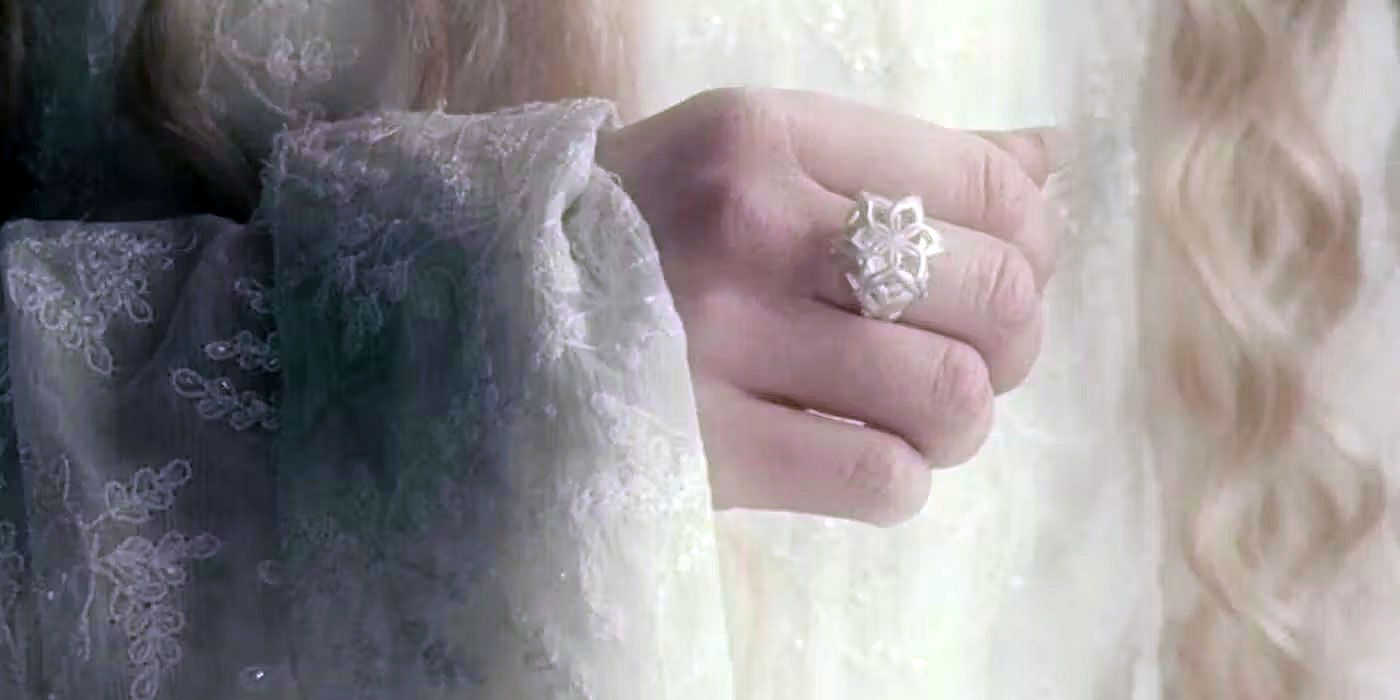
Final Wielders of the Rings of Power
Galadriel
Elrond
Gandalf
Nenya
Vilya
Narya
Water
Air
Fire
With her Elvish magic, years of hard-earned wisdom, and Nenya on her finger, Galadriel was easily the most powerful Elf in Middle-earth during Tolkien’s trilogy. The Lord of the Rings: The Rings of Power, also showed just how much of her life has been embroiled in the war against Sauron. Despite her refusal to give into Sauron’s temptation in The Rings of Power, she still fantasized about what it would be like to find Sauron’s Ring and use it to overthrow him. Her intentions would have been pure because she sought to instill peace.
Ultimately, however, Galadriel would have been corrupted by the power of the One Ring, and her beauty would become an object of worship. Thus, Galadriel’s dark form in Jackson’s The Lord of the Rings personified what would have occurred had the Lady of Lothlórien given in to temptation and taken the One Ring for herself. She would have succumbed to evil because the Ring was indomitable, even with her overwhelming power.
So, in the grand scheme of things, Galadriel’s temptation scenes were basically the same in both the book and Jackson’s adaptation. The only difference was who perceived this vision of Galadriel. In Tolkien’s novel, Frodo saw Galadriel’s dark form in his mind, while, in the movie, Galadriel represented her own temptations with a literal transfiguration. Some fans might have preferred to see Galadriel deliver her lines without being a dark figure, but all in all, it was a helpful, evil visual for the audience to show Galadriel’s reasons for refusing the One Ring and instead guiding Frodo on his journey.




